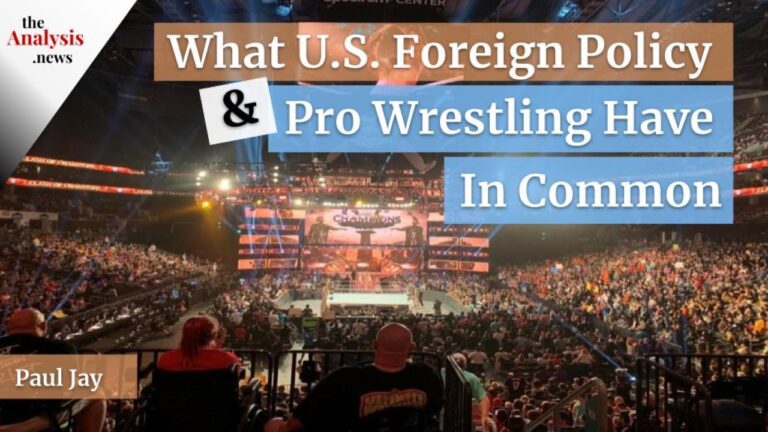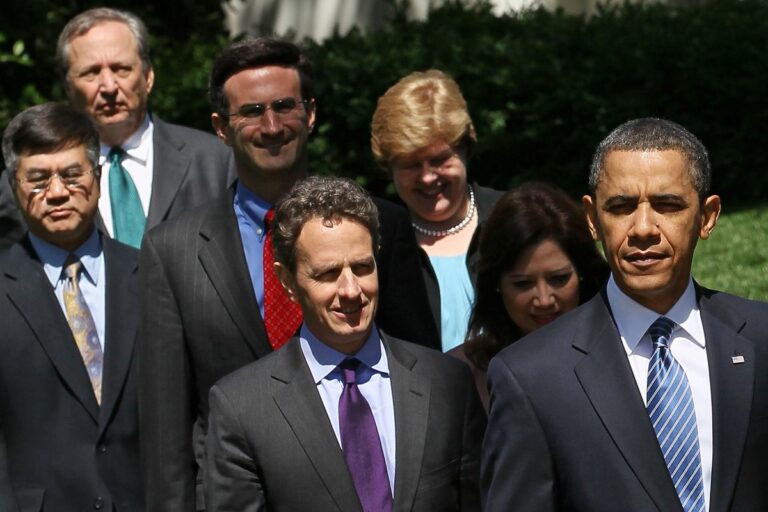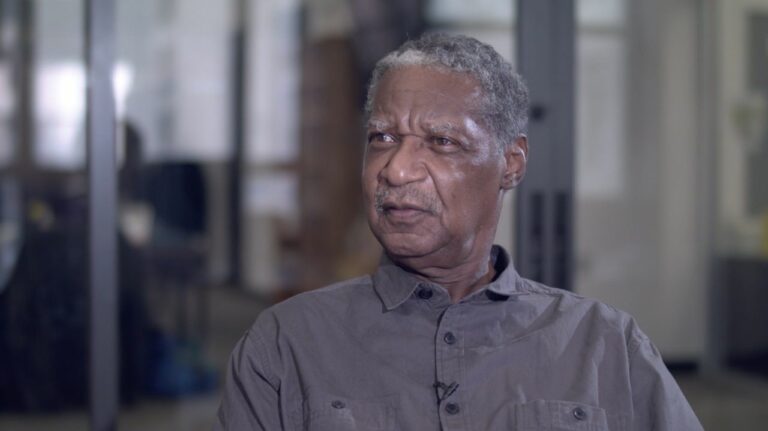“We’re not going to win anything in the broader society if we don’t start with the foundation of strong worksite unions and organizing workers who may not agree with us. Under a capitalist system, the single most powerful thing workers can do is walk off the job and stop production.” Jane McAlevey joins Paul Jay on theAnalysis.news.
Paul Jay
Hi, I’m Paul Jay, and this is theAnalysis.news and our show Reality Asserts Itself. Please don’t forget the donate button. Please also sign up to be on our email list and subscribe if you’re on YouTube. If you’re sharing from one of our podcast platforms or wherever you are watching or listening, if you can share it, that would be great. I’ll be back in just a few seconds with Jane McAlevey, the organizer’s organizer.
If there was ever a time in recent memory to get organized, it’s now. There are over 150 strikes going on. Maybe more. In October, there were almost 17,400 workers on strike, and there’s, I think, more now in December. The Washington Post wrote recently that, quote, “The 2021 strike movement─”, that’s their terms, 2021 strike movement, “─is historic in both its size and the way it spans across industries” end quote.
There are new organizing initiatives, including the recent success at Starbucks in Buffalo. Four Kellogg’s plants across the country have been on strike for two months. Last week, the workers rejected a contract that didn’t end the two-tier wage system where new workers started salaries far below the existing ones. That’s a big deal. Kellogg announced it’s going to hire 1,400 strike-breakers— well, they didn’t call it strike-breakers, but that’s what they are— to permanently replace the striking workers. Boycotts are forming, and thousands of Reddit readers recently flooded Kellogg’s job application website with phony applications and are crashing its jobs portal, all as a campaign to make it a lot tougher for Kellogg to hire strike-breakers. This is a good time for organizing. Workers appear to have some leverage.
This is a continuation of my series of interviews with Jane McAlevey, which focuses on the lessons and experiences that helped shape her worldview and build her approach to organizing workers. As I said, this is a great time to get organized and learn how to organize better. Janes the author of several books, including No Shortcuts and Raising Expectations and Raising Hell, which was named the most valuable book in 2012 by Nation magazine. Jane organizes and teaches organizing to organizers, sometimes more than 10,000 at a time. Okay, thanks for joining me, Jane.
Jane McAlevey
Always a pleasure.
Paul Jay
So, before we get into sort of the main themes of this session, which will be something you call whole-worker organizing and the power of the strike, talk about the moment we’re in, this growing movement, why it’s happening, and what shape it’s taking.
Jane McAlevey
Yeah, there is a lot happening, even just since I spoke to you recently. You’ve highlighted some of the key ones, and I’m going to lay out a few more. I think that the overall picture of what’s happening is that people are pissed off. Workers are really angry. They’re really tired of the conditions that they’ve been asked to bear, and I think, I mean, there’s two points. One is I think that was happening before the pandemic. I just think the pandemic has made it even more obvious to people that their employer really just doesn’t care about them at all, and people have kind of had it. So, I think the frustration is huge. Anger is palpable among ordinary workers all over the country, if not all over the world, frankly. I think the challenge right now is that even with the declaration of sort of the strike-tober, which you referenced, even with the declaration of calling something strike-tober, and of looking at the numbers of people on strike, it’s still really insufficient to what we need. And then two, more importantly, the challenge right now for organizers worldwide, I think, is how do we go from individual actions?
We’ve got two terms the media’s also been using, the great resignation or the big quit. Millions and millions of, at least in the United States, millions, tens of millions of people have quit their job starting in April. I mean, if there’s a quote-unquote a movement, which I think is too strong a word for what’s happening. If there is a movement, the movement is individual workers taking individual action. There’s even a New York Times piece a few weeks ago─ I think it was the Times where they were, sort of, highlighting the take your job and shove it kind of attitude that people are going onto taking to Instagram when they quit. They’re taking to Twitter or whatever Facebook, their social media, and they’re saying, I’m about to walk in and quit and announcing it online as they quit their horrible job. So, there is a lot of anger.
What’s interesting to me, though, is the challenge to get that into collective energy. There is individual action and individualism, which is a result of the 50-year─ what I would call war on the concept of the collective, which has been going on under the neoliberal regime since the early 1970s. That’s what I researched and documented in No Shortcuts. I take us from the beginning of the ’70s, the creation of the idea of austerity in modern times, and how the politics of the 1970s forward was cultivating individualism.
So, I think what we see right now is not only in the mask debate. Not only that, but too many people conceive freedom as their individual right to reject wearing a mask, a vaccine, or something like that. That’s a bad map. That’s like a kind of egregious manifestation of the culture war to make people think and act as individuals versus thinking and acting with solidarity and collectively. It’s also true in these sort of individual ‘I quit declarations’. It’s like this sort of powerful idea, and it really is of the moment of the social media kind of culture that we have created, which, again, is about individualism. It’s not about a collective despite the word social. That’s why I often call it antisocial media. When I watch workers making these declarations of like, ‘I quit’, I just think to myself, if out of a tiny fraction of the numbers of people who are quitting decided to do what the Starbucks workers just did, which was not quit, which was put up with a very abusive union avoidance─ that’s their language─ union-busting campaign and decided to actually hold together to fix their bad employer. That’s what we need in the United States, Canada, Mexico, and all over the world.
If everyone just quits their bad jobs, it’s frankly not the same thing as people making the decision to stand together united and figure out how to form a union, which is why we run the huge training programs that we run so that ordinary people can figure out, how do you do this?
Paul Jay
Quit your bad job can’t last. I mean, people are going to have to go back to work. In fact, I do not exactly understand how many people are able to not go back to work. Most of, a lot of the unemployment payments have run out. The various subsidies are over. It can’t be very long before there are a lot of people going back to work. Do you think the strikes that are going on, the news of Starbucks, is that going to inspire people to do what you’re talking about?
Jane McAlevey
Yes. I mean, a strike isn’t going to inspire anyone unless the workers win. So, is what’s happening at Kellogg’s inspiring people? No. I mean, maybe? If the end result is that 1,400 workers lose their job, that’s not going to inspire people. So, that’s actually like a crisis. I would still─ so yes, I don’t think it’s that simple. I think, first of all, it’s in the tens of millions, so it isn’t that they’re quitting and not working. It’s that they’re quitting, maybe taking another crappy job for two months, and quitting that job. A portion of them do have to go back to work. They take a crap job for a few months, and then they quit that job. That’s part of─ I mean, these numbers are so new that a lot of economists and people like me are trying to look at them and understand them.
The Washington Post, whatever, who you’re quoting, there’s been a lot of coverage of these extraordinary numbers. It crested at four million in a single month in July. In the United States, four million people have never quit in the same month on record. We haven’t collected records for all times, but it’s literally an astounding figure. In April, it was just over three million. Then in August and September, it’s bested July. So, we’re talking about─ math is not my forte. When I do negotiations, I always have a smart researcher who’s going to make sure that I don’t mess up overtime calculations. Still, just from the numbers I articulated, we’re talking about 12 or 14 million, roughly, just in the big months when people were quitting. So, I definitely don’t think that they’re quitting and just staying home. No. There was a recent analysis showing that a lot of those quitting are actually middle-level managers in the tech and healthcare sector. Some of those people can quit their job and stay out for a while. Maybe it’s a two-working household. Who knows because the numbers are new, but we know enough to know the numbers are huge.
Paul Jay
Let me just add one thing to this, then. Obviously, they’re quitting and moving on, or they will move on pretty soon to something new, but there is a kind of window here. When globalization really took hold in the ’80s and ’90s, there was a real intimidation of the workers. Okay, you go on strike. Goodbye to your job. It’s going to Mexico; it’s going to Asia. It really mitigated the militancy and now people, at least for a while, don’t seem quite so terrorized by that. Maybe it’s part of the breakdown of the global supply chain. I don’t know if people are conscious of that, but maybe? So, there is a window here, but let me cut to where you’re going. So, let’s say people are watching this and maybe for the first time they’re really thinking, jeez, I want to get organized, or I want to organize, or people that have been organizing talk about your concept of how to get organized and this whole idea of whole-worker organizing. What is the methodology you’re talking about?
Jane McAlevey
I mean, I think that for people who are listening and want to actually get a feel for what organizing looks like, we should encourage them to go to Rosa Luxemburg [Stiftung] and sign up for the Organizing for Power series. They can do that at my website, by the way, or they can do that elsewhere. So, that’s probably the easiest place to go initially, and then we’ll route them to the courses.
Paul Jay
Let me add one thing. I think we talked about this once, but I’m not sure if it was on camera. So, you’re making an offer, if I understand it correctly. If you can get 20 people together and otherwise organize 20 people to come to one of the sessions, they can get in the session?
Jane McAlevey
Yeah, it’s not a session. They have to commit to the entire training series. So, it’s 20 people. One of them has to serve as a contact, and they will sign up for a six or eight-part course in organizing, which is free. So, the cost is in their commitment. We’re looking for capacity and commitment. The very first global course we ran would let anyone sign up, which I was opposed to from the first round, but I am working collaboratively with a team of people. We learned very quickly on the second course that when we set a minimum threshold of people that you had to come with and that one person had to register everyone, that led to a different kind of accountability. So, the beauty of doing things for free is that it lets anyone in.
I think the challenge as an organizer, and Cesar Chavez said this best in the ’50s and ’60s, is that even the poorest person, if they’re not somehow bought into what they’re about to do─ in the case of the farmworkers, he meant pay dues. There were, sort of, too many Liberal College students who were volunteering for the farmworkers and who were scared to ask poor workers to pay dues. That’s the story that I’m linking back to. Chavez one day gave this amazing speech to the staff and the leaders and said, people need to pay in order to form this union and build it strong. So, I subscribe to that part of Caesar Chavez’s theory that everyone’s in this. So, at Rosa Luxemburg, it’s incredibly valuable that people can do it for free. I think it’s why our participation rates in parts of the world where people don’t have access to money are so high right now.
Paul Jay
People don’t remember you’re doing 10,000 people at a time on some of these sessions.
Jane McAlevey
Yeah. I mean, yes. So, the last course was the one that really almost crested 10,000, which was extraordinary. It’s partly because we’re doing it in 12 languages simultaneously. We’re making it as accessible as possible, and at the same time, we’re not interested in people taking the course who aren’t actually serious about the course. So, it’s a commitment to the whole─ we ask people to commit to the whole course, which is weekly over a series of weeks. The next one will launch, I believe, on May 10th. I’m not looking at my calendar. And then also at the University of California, at Berkeley, I run a separate training program that’s very California-oriented but not just California-oriented. That’s not free, but there are similar opportunities that I offer pedagogically similar both domestically and then also for the international program.
Paul Jay
All right. So, what is whole-worker organizing? And what are they going to learn in the course?
Jane McAlevey
Yeah. Well, first of all, what they’re going to learn in the course may be different from the whole-worker. Actually, the difference between six and eight sessions has to do with that. So, there are different things we emphasize. We start with the core fundamentals that you and I have talked about. Leadership identification. Who’s a leader versus an activist? Semantics, the words we use, structured organizing conversations, and what we call wall charting. How do you actually understand? How do you teach workers to build a worksite structure and then structure test? Those words are all the most important words in my vocabulary, and then we get to the whole-worker question. So, what comes after? It’s a good way to ask the question because I want to go from those fundamentals of building your worksite structure strong and then begin to talk about the immediate next place they go, which is whole-worker organizing.
Let me start by saying that whole-worker organizing is not even a term I like to use. I prefer just to say good organizing, to be honest. Part of what I was doing in No Shortcuts, which is where I wrote about whole-worker organizing, the whole book was an attempt, on my part, to distinguish between what people think is organizing and what I think organizing is. Not just me, but many other organizers, which is that we distinguish it from activism. It’s the whole concept of, are you only working with people who want to talk to you, that’s mobilizing, and activism, or are you actually fundamentally expanding the base of people committed to the work that we’re doing, and you’re spending most of your time with workers who actually maybe don’t want to talk to you, at least initially?
That’s the base from which we move into broader work in the broader community and in society at large. The important thing is every course we do, we start with the first five lessons that I just laid out for you. Why? There’s so much sort of coalition building, alliance building. Yeah, coalitions and alliances. The whole world is filled with coalitions and alliances now and not filled with enough of what I call either local unions or base-level organizations that are actually doing real organizing work on the ground. So, what I’m trying to distinguish by calling it whole-worker organizing is that we’re not going to win anything in the broader society. It’s my read of our history. My read of the moment and my life experience. We’re not going to win anything in the broader society or in the broader community if we don’t start with the foundation of a strong worksite union.
Again, as a quick review, under a capitalist system, the single most powerful thing workers can do is walk off the job and stop production. Now, some people will argue and have said to me, well, Jane, isn’t it also true that it’s very powerful for people to vote? And I say, well, yes, it is very important to vote, but if you look at how contorted the voting system is─ speaking for the U.S., at the moment, we’re barely a democracy at this point. So, it’s a hell of a lot easier to watch right-wing Republicans, and frankly, timid or problematic corporate Democrats, not challenge the right that ordinary people have to vote. Particularly black people and brown people in the United States who are just being systematically taken off the voting rosters and gerrymandering the whole thing. So yes, voting matters. I’m always going to say voting matters, and I believe voting matters, but, under capitalism, the single most powerful tool that people have is stopping the production line, period, or the service line if it’s a service industry.
So, that’s why I say the courses that we do, whether it was strike school where we added on additional sessions about, how do you do picket line support? What are the mechanics of striking? Sometimes we focus on that. Sometimes we add the addition of the whole-worker as a really deep concentration in our course, and sometimes we do special courses just on it. What it is, essentially, is a recognition that all workers or the vast majority— I should not say all about really anything. The vast majority of workers have a life outside of work. They have a community that they go to. They have a home they go to if they’re fortunate. In the United States, and Canada, it’s probably true for most workers. It may not be true for all workers, but it’s true for most. They have connections that are pre-existing connections in their community. They have a set of issues that really matter to them when they punch the clock and go home to their neighbourhoods, and those issues, in my experience, are not only not less important to them, they might even be more important to them. If you are an African American black person in the United States and you’ve got a 17-year-old teenage boy, the concern that your kid will get shot for a missing taillight is certainly no less than if they get a 50 cent an hour raise, to be perfectly blunt.
So, the whole-worker approach is sort of a challenge a little bit too. Now we’re going to get into a little lingo that I don’t tend to use because it frustrates me. The materialist conception of the world that you will find among the Left in trade union work or labour work, I think, the whole-worker approach acknowledges both that workers have a lot of issues that are about dignity and respect. Not just their quote-unquote material needs, but they have many connections. Some of those connections might actually be able to positively affect the campaign they’re in, in their workplace, to get a stronger contract for one.
Let’s say, Mary, the nurse─ actually, I’m describing someone. I won’t say her last name. Mary C., a nurse who was fired─ actually, I can say it. I wrote about it. Mary C., going back to my first book, was fired in a vicious union-busting campaign in Connecticut years ago. Mary, which is where we first began to systematize and pilot the whole-worker idea. I’ll explain what it looks like to systematize it in a minute. The concept is about Mary C., an amazing certified nursing assistant in a long-time nursing home owned by a filthy rich for-profit company. Mary was the absolute leader in an organizing drive. She was the leader’s leader. All the workers looked up to her. She was an older, rather quiet, demure African American woman who held a lot of respect. She just had the social prestige and the work credibility to be the kind of leader that you need to survive a union-busting campaign. So, what did they do? They fired her.
Well, it turns out that Mary─ and they fired her very publicly, like, right near when we were getting to the National Relations Board vote. Mary turns out, and we already knew this because we’d begun to do the work, attended a Church that was a very powerful Church in the city of Stanford, Connecticut, where Mary actually was working. And the reaction─ because we had done the legwork already. This is very important. We weren’t like, oh, a worker got fired. Who can help us? We were way ahead of that. We’d actually been doing the work. We understood that the high-risk campaigns that we were running were going to run straight into the power structure and that we did not have enough power, just a straight trade union in a big new organizing project. In a labour market where there was very little union power. By the way, that’s most of the United States at this point. Twenty-five years later and most of the country’s workers have too little labour market power.
So, when we found out that it was Mary, who was sobbing when I was first talking to her, we literally said to Mary, come into the office quickly, like we went and got her. She called to say I was fired. Shocked. Talk about shocking for a long-time worker who’s nothing but a stellar worker. So first, you have to deal with the pain and the emotion, and that’s real. Anyone who doesn’t do that is nuts. But that’s the issue of what do you do with a worker fired in a campaign? We’re not going to focus on that much, but the result of the work of the whole-worker approach is that once Mary came in, we helped her put herself together and helped her feel strong. Like you were targeted for a reason, and are you going to let them stop what you are setting out to do, which is create better conditions for the long-time residents that nursing home aids are devoted to and love in their nursing homes. Even talking about nursing homes in this pandemic makes my head explode because there’s been so much death and so much abuse by these for-profit corporations in the long-term care and nursing home industry.
So, Mary, we quickly asked her to ring up her minister in the office, like from the office and explain what just happened. She called her minister and explained it. I mean, I was calling a different minister, who a different set of workers were connected to because I’m only going to reach out to ministers that workers in our campaigns have already identified as their own ministers, their own priests, their own rabbis, or, by the way, their own fill in the blank. Football leaders, curling leaders, and we can get to others, but in this moment, as an example, Mary made that phone call. I called a different minister who we already understood because we were doing something called a power structure analysis, which goes along with the whole-worker organizing. We were already studying who held power in the broader community. We could quickly stitch together Mary’s minister, her activism in her Church as a leader of Bible study. There’s a super religious certified nursing assistant and her minister who had known her for decades at that point. The outrage was instant and palpable. This is an old, respected worker who’s thrown down there, I think, at that point for two decades, through a series of changes of owners and the idea that she was fired lit up the minister.
So, I had one very powerful minister call Mary’s minister, and the game plan was that by the next morning, they were going to all come down together, and it wound up being like 30 of them in their proper vestments to try and walk her back into work, which they did. Now, they didn’t actually get her job back that day, but the media coverage was extraordinary. What it did do was make every worker in the campaign suddenly feel completely safe. Then they announced and put the employer on notice that they were not going away until Mary got her job back, and that campaign continued until Mary got her job back. So, we won the unionization drive. We put the first issue across the table in negotiations, which is what I was taught to do when a worker is fired during a campaign, the first issue. We’re not getting our wages or anything until you agree to hire back any fired worker. You’ve got to be damn strong to win that demand. We would not have won that demand without the extraordinary support that came from the religious and faith community in that long-term struggle that we were engaging in.
So, the whole-worker approach understands that Mary is not just Mary, the certified nursing assistant who comes to work. She doesn’t just care about, is she going to get a raise? Is she going to get access to a better health care plan? Though she certainly cares about all of that, it’s an understanding that Mary has a family, a life, a whole community around her, and that if we can help Mary connect the dots between her connections in her own community, and if she can lead people into understanding the unions as a force for good, now we’re talking about the kind of power that can’t be separated.
I think we might have talked about in an earlier segment another example from a different nursing home, an assisted living facility where we also had a worker fired in a campaign where the guy was flying up from Kentucky from Vencore. At the time, this very nasty company— they all change their names once they get too many lawsuits against them, and then they flip into a new name. Anyway, a year into it, two years into it, we were up to 45 ministers who would do things like walking a worker back in, hold a press conference right in front of an employer’s facility, look right at the manager and say, no one is getting fired in this broader community for the simple act of exercising the right to form a union or go on strike.
I want to distinguish this, and I’ll stop for a minute so you can ask anything that’s sort of clarifying for you, but there’s so much to say about this approach. What I want to distinguish is, I started by saying, there are a lot of alliances and a lot of coalitions. There are alliances and coalitions, an alliance for that and a coalition for this and that. A lot of them are weak, and they’re made up of weak organizations that don’t, frankly, have a lot of power in any of the communities in which they work. Now, there are exceptions to that. We’ve got a handful of organizations that are really strong, that are in the sort of progressive or community-based world, but frankly, if we’re being honest, not that many, which is why we’re in the shaping room.
What I understood as a young organizer coming through all the experiences you and I have covered, and then what I understood at that moment, I shifted full-time into the trade union movement. One, because I’d been doing so much work younger as a community-based organizer. I already was very aware of all these issues that workers had because I was working with workers when they left their job and came off shift. I knew they had really serious issues. I mean, if you’re in Flint, Michigan, and you go home to your kid getting poisoned by lead in the damn drinking water to the point where there are serious neurological issues going on for children in Flint, Michigan, because of the right-wing governor’s decision to change the pipes and let lead into poor black people’s communities. You cannot tell me that the defence of that, of children, and getting a cleaned up water system is going to be less important than whether or not a worker gets a raise.
So, what I experience all the time, there are two issues. First, is, does a union even care about engaging the community? That’s step one. I mean, many unions just don’t. They see their job very narrowly. That’s what’s called business unionism. They just want to get the contract and go home. Still, there’s even a set of unions that do have a more progressive vision that articulates a set of values about getting a single-payer health care system down here, enforcing treaty rights, or whatever the issue is. But then they forget every lesson they learned about what it takes to build a strong union, a strike-ready union, a supermajority strike-ready union. It’s like they check their brains at the door, take a shortcut, and go ring up whoever the community-based group or whoever the progressive sounding group in the area is. Too often, that’s an organization that’s not going to bring them the kind of power that I just described to you that Mary C. herself, through her own connections, could bring into her fight. Getting 45 of the most powerful religious leaders in a region filled with the power elite to come descend on employers en masse is a very different set of power than calling up a nice, well-intentioned weak community-based organization that would come and do the same press conference, but the employer watching it wouldn’t be scared at all. Like, there’s no threat here. Do you know what I mean? Oh, great.
Paul Jay
Yeah, they have no mass base, right?
Jane McAlevey
They have no mass base, and they have no power.
Paul Jay
Okay, we’re going to do one more segment with Jane. We’re going to do one on the importance of the strike. So we’re going to get into all this in the next segment. Thanks very much, Jane.
Jane McAlevey
Good to see you.
Paul Jay
Thank you for joining us on theAnalysis.news. Please don’t forget to donate. If you don’t have the money, just watch, subscribe, share and all the rest of it. Thanks again for joining us on theAnalysis.news.
Podcast: Play in new window | Download | Embed
Subscribe Apple Podcasts | Spotify | Android | iHeartRadio | Blubrry | TuneIn | Deezer | RSS
Never miss another story
Subscribe to theAnalysis.news – Newsletter
“Jane F. McAlevey is an American union organizer, author, and political commentator. Since June 2019, McAlevey has been a Senior Policy Fellow at the University of California, Berkeley Labor Center. She was also named Strikes correspondent for The Nation magazine.”













